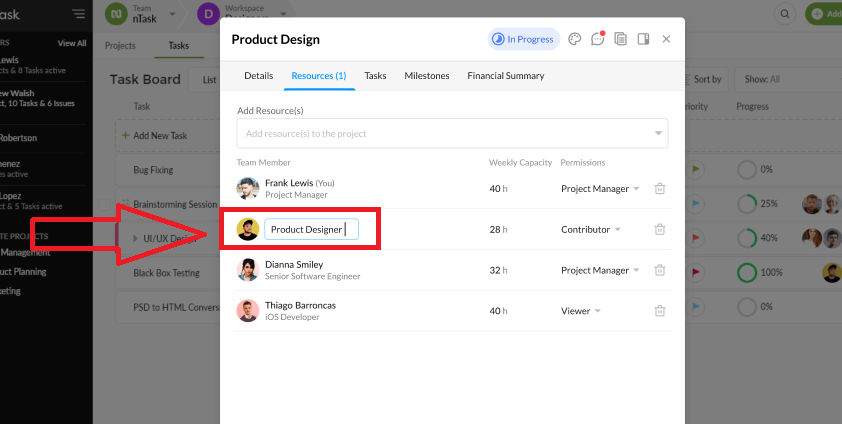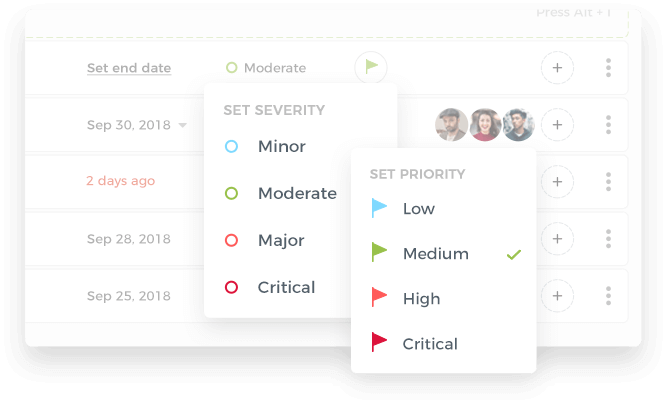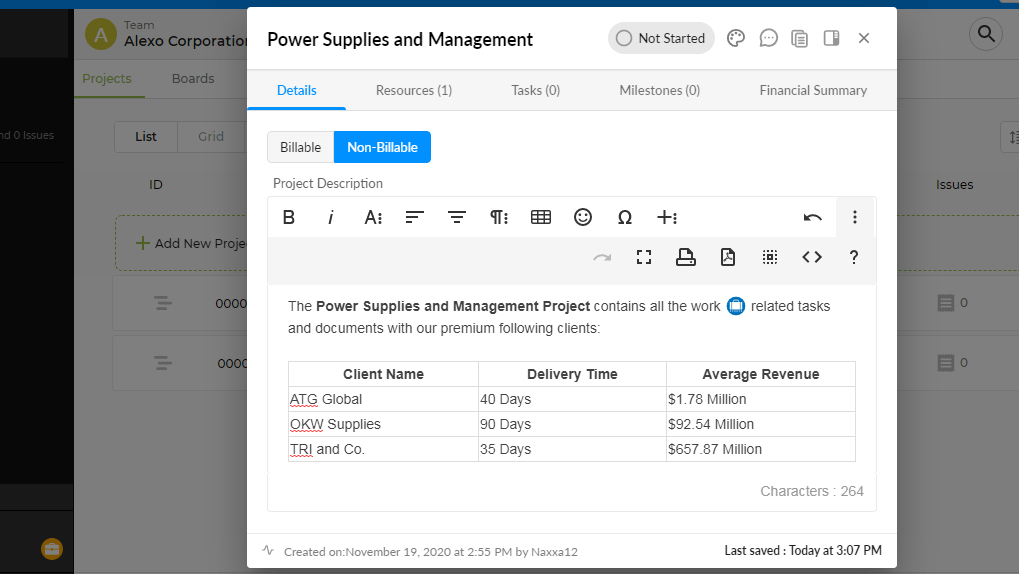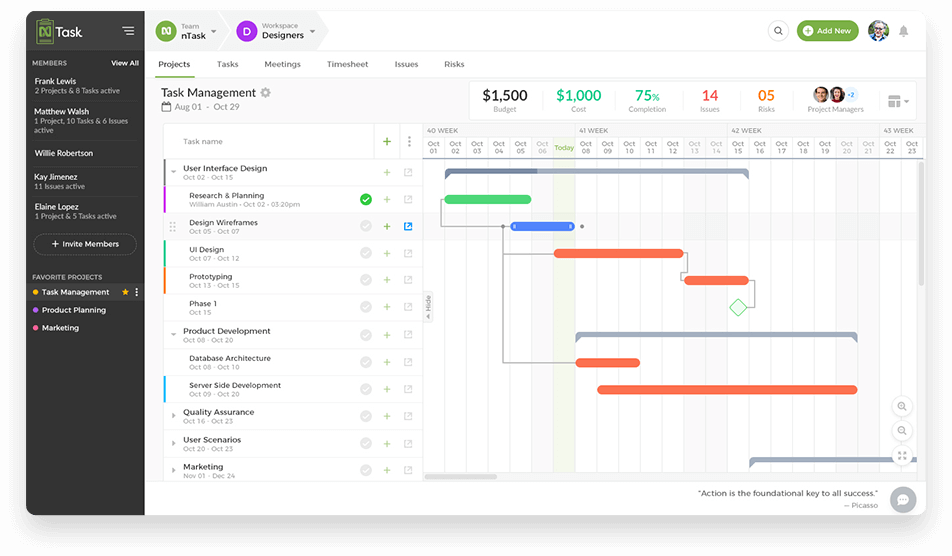As we know that every single service or product that enters the market, is driven by multiple customer and business needs also known as the requirements.
But, as a project manager or a project development team member, how do you make sure that the final product or the service is in full alignment with all these requirements that have been set by the people in charge?
The answer to that question is requirements management planning.
If you were searching for more information about requirements management planning, then you are in luck because, in this article, we are going to talk about what requirements management planning is, why is it so important in the market right now and how can you create an effective requirements management plan for yourself.
What Is Requirements Management Planning?

A requirements management planning process determines how you are going to identify, analyze, track, document, implement and control all of the requirements of the project that have been set by the project manager, the company, or any other personnel in charge.
Let’s take Simon to be our requirements management planner. Simon is a stickler for rules and fool-proof planning, so he’ll be perfect for this.
The changes that were made to Simon while the rest of his team is busy doing their work, are the requirements. These requirements are going to change the scope of the entire project.
But why is requirements management planning so important?
Well a requirements management plan generally ensures that every single requirement related to the project and the project development process is tracked, captured, addressed, analyzed, while also:
- Allowing all of the development teams to control the overall scope of the project
- Preventing you from losing track of every single requirement that has been set by the business and the stakeholders associated with the project
- Fixing all of the common causes that can lead to project failure like project risks, scope creeps, cost overrun and project delays, etc.
Let’s now take a look at how you can create a successful requirements management plan for your product, project, or service.
How to Create a Successful Requirements Management Plan?
Here are the steps that we need to follow to create a successful requirements management plan.
- Defining the Project Scope
- Identifying all of the Project Stakeholders
- Defining the responsibilities and roles for the Requirements Management Efforts
- Managing the Conflicting Requirements
- Strategizing the Requirement Prioritization Process
- Defining the Requirements Traceability Matrix
- Managing the Changing Requirements
- Communicating the Project Requirements
- Identifying the Tools for Managing Requirements
Let’s discuss these steps of creating a successful requirements management plan in detail and find out how they can help us make one for ourselves.
1. Defining the Project Scope
As we know that the project scope consists of documenting all of the project deliverables, costs, goals, tasks, and deadlines. Whatever you want to achieve through the project or the elements associated with the project are included in the project scope.
You’ll notice that you typically capture the project scope of the whole shebang under a scope management plan embedded in a project charter or project plan. After that, you can easily copy the whole thing from here.
One thing that you need to know is that without the scope management plan, the stakeholders associated with the project are going to lack the necessary information that is needed to identify all of the changes that become a requirement in a project.
2. Identifying all of the Project Stakeholders
One important thing that your requirements management plan should have is a list of all of the actions that you and your development team are going to perform so that in the future you can easily identify all of them.
Once you have the complete information about the actions that your team is going to take, only then you can map out all of the requirements that the stakeholders are going to set for the project.
3. Defining the responsibilities and roles for the Requirements Management Efforts

Easily assign job role with nTask for all resources
The next step is to make sure that your requirements management plan clearly states the responsible parties for all of the efforts that have been put into creating and managing it.
These responsible parties can be the project manager who is managing the entire project management process, a business analyst who is mapping out all of the elements that are connected to the project, or any member of the project development team that is working on the project.
Furthermore, you need to make sure that your management plan is clear and transparent as it has to define all of the roles and responsibilities for overseeing the overall RMP.
4. Managing the Conflicting Requirements
When so many different people, managers, and stakeholders are working on the same project and the requirements attached to it, there are bound to be some conflicting requirements that are not going to be easily acceptable to every single member of the whole project.
For example, your client may want a tool that performs 1,000,000 different operations at a time, but your project development team may find this feature useless and impractical.
This is why, if you are creating a requirements management plan, then you need to include a workaround to this situation where you need to get your client and the development team on the same page so that they can agree on the app feature and resolve this requirements conflict.
5. Strategizing the Requirement Prioritization Process

Set task and issue priority
As we know that the more complex the projects of this market are, the more they have multiple requirements being set by the stakeholders attached to them.
When you have so many requirements at hand, you need to make sure that they are properly prioritized, so that your project development team knows how and when to work on those requirements.
This requirements prioritization process should include the identification of all of the requirements that are critically important to the development of the project, and which you can easily assign to the development team members that are going to work on them in the next sprint.
One thing you need to know while prioritizing a project requirement is that you should always consider the stakeholder influence, the technical requirements, and the approval by key stakeholders, etc., to make a clear and informed decision.
6. Defining the Requirements Traceability Matrix

The 6th step is defining the requirements traceability matrix. As we know that requirements traceability refers to how you are going to track the project requirements throughout the lifecycle of the whole project in question. All of this is done with an effective traceability matrix.
A traceability matrix is a useful document in which all of the user requirements according to their specific use cases are mapped and traced.
While the people in charge are dealing with the requirements traceability, you need to make sure that you have a requirements baseline in the event that your development team knows what was committed and what has to be delivered to the client.
7. Managing the Changing Requirements
One thing you need to understand is that changes to the requirements and the overall project development process are inevitable. They will continue to pop up no matter how thorough your project plan is.
If you are in the position of a project manager, then you need to establish a protocol to manage all of the changing requirements as and when they arise in the whole project development lifecycle.
To handle this, your requirement management plan can have a process called a “change control process”. This process will keep your project development plan open to any and every change that can affect the project.
This plan to handle the changes will have the following key points.
- Reasons for the decision that led to the changed requirements
- How a particular requirement was and how it has changed
- Who is going to authorize and initiate the changes that have to be made
- What impact can these changed requirements have on the overall project
8. Communicating the Project Requirements

Another thing that you have to keep in mind is that your requirements management planning process should also clearly define the mechanism for collaboration and communication regarding the user requirements to all of the stakeholders associated with the project and the project team that is working on it.
In this plan, you can state things like:
- Who is going to inform all of the stakeholders and the people associated with the project about the changing requirements
- When are they going to be informed and what is the right time to inform them
- Who should be informed about the changes that have to be made and why
- How are they going to be informed about the changes that have to be made
9. Identifying the Tools for Managing Requirements

Lastly, you should use a project management tool like nTask to describe, track and manage each and every requirement associated with your project.
nTask is an incredible task management and project management tool that allows you to track and manage all of the tasks and processes that are included in the project development process.
Here are some of the features that you can check out.
- Task Management
- Project Management
- Risk Management
- Issue Tracking
- Bug Tracking
- Gantt Charting
- Kanban Boarding

-
Manage Product Requirements With nTask
Organize tasks, projects, issues, Gantt charts, and create custom fields. Sign up today!
- Get Started for Free
Conclusion
This was our guide on requirements management planning and how can you create a plan for yourself in today’s market. If you think that we missed something important to mention, hit us up and we will make sure to get back to you.
More Readings For You:

